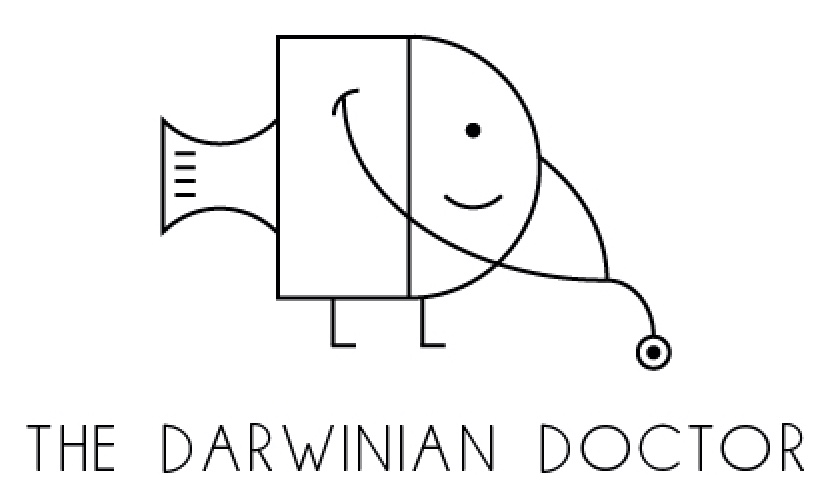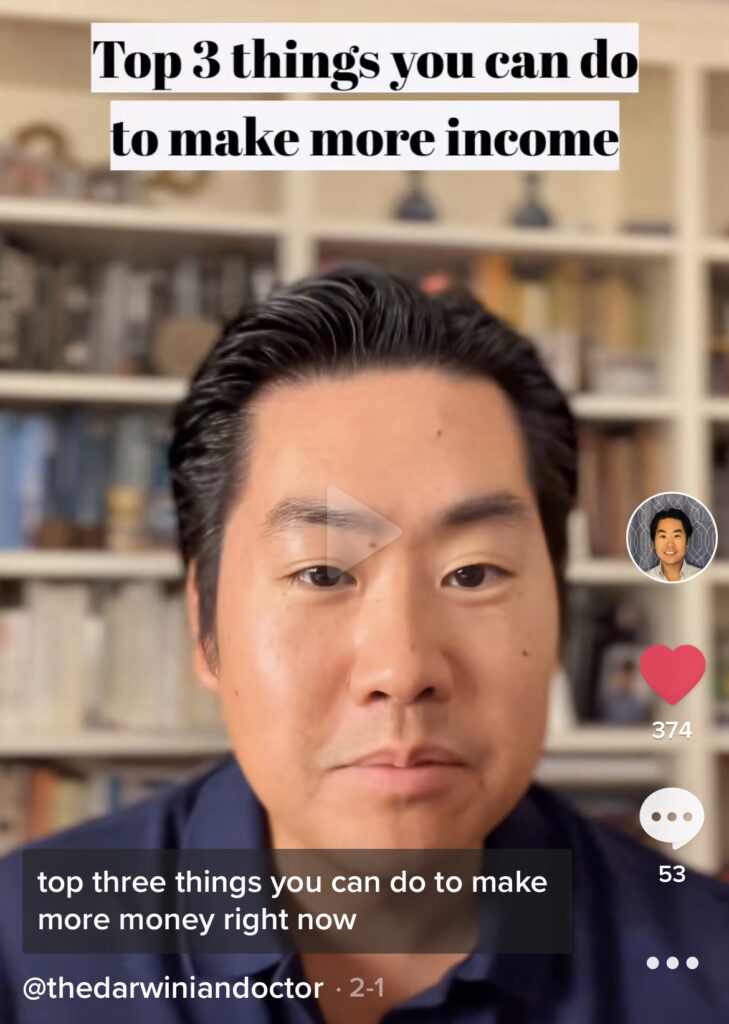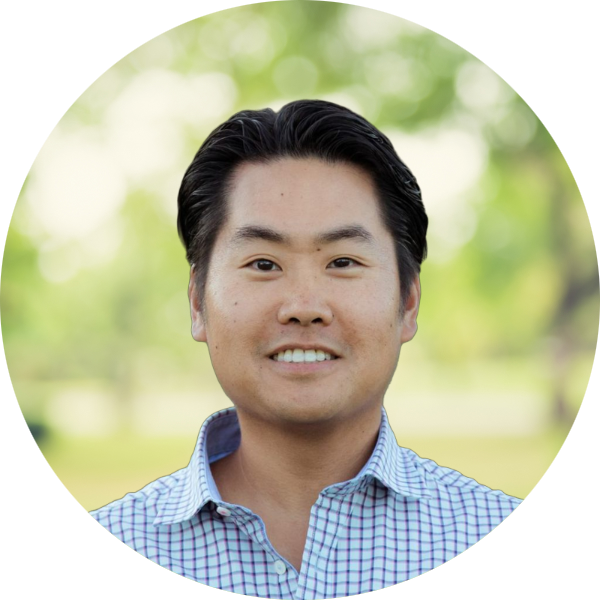Today I’m going to outline the top two ways to reach financial independence: the 4% rule and business cash flow method.
![The 2 Ways to Reach Financial Independence [Finance 101] The Darwinian Doctor](https://thedarwiniandoctor.com/wp-content/uploads/2022/02/2022-Feb-2-Ways-to-Reach-Financial-Independence-1024x1024.jpeg)
This post may contain affiliate links.
This post is inspired by my realization that one of the biggest stumbling blocks on the road to financial freedom is belief. This is — belief that financial independence is a mathematical possibility.
A lot of people have financial goals that include retirement at some point in the future. Usually, people just hope and pray that they’ll be in the financial situation to retire when they get to around 65 years of age.
But whenever I suggest that it’s possible to become financially independent much earlier than 65, I usually get blank stares and disbelief.
As I discuss in my eBook, the first step towards early financial freedom is simply believing that early financial independence is possible. But the other part of the equation is understanding the math behind the FIRE (financial independence, retire early) movement. The good news is that the math is actually pretty simple.
Here are the two ways to become financially independent
- The 4% rule (aka the 25x rule)
- The business cash flow method
If you follow the FIRE movement at all, you’re probably familiar with the first way: the 4% rule. Let’s discuss this first, then we can talk about the business method next.
The 4% rule
This rule has an academic basis in the Trinity study. This fundamental study was performed by academics from Trinity college. They basically studied the stock market going back 100 years and ran simulations to see what annual withdrawal rate would almost guarantee that you’ll never run out of money over a 30 year time period.
They found out that if you have an investment portfolio of well diversified stocks and bonds, you can take out 4% of that portfolio every year for the next 30 years, with a 95% certainty that your nest egg will never get depleted. The magic mix of stocks and bonds was a 75% allocation to stocks and 25% to bonds. These calculations are based on the history of the US stock market, which has an approximate 8-10% rate of return over its history.
If you get to the point where your annual expenses are only 4% of your portfolio, you’ve reached a bare bones level of financial independence.
You can find out more about the Trinity Study and asset allocation in this book review: The Simple Path to Wealth.
Turn the 4% rule into the 25x rule
To apply the 4% rule, I actually like to approach it from the perspective of your spending. This turns the equation around slightly, but I just think it’s easier to think about this way. Here are the steps:
- Create a budget and track your income and expenses
- Estimate your annual expenses. (This is your “4%”)
- Multiply your annual expense number by 25
- This new value is your target portfolio value
Step one is a big stumbling block for many people, but it’s an essential first step. You have to know how much money you usually spend in a year to know what your financial freedom number is.
To do this, you must track your expenses for a few months (at least), so you can average out your spending over the year. This annual sum becomes your “4%.”
The next step is to invest your extra monthly income into mutual funds like the Vanguard Total Stock Market Index, and let compound interest and time get you to your goal.
It’s important to realize that your expenses may change over time, so your savings rate will have to adjust as your life circumstances change.
Do you need to increase your income? Here’s a TikTok with some suggestions:
Discussion of the 4% rule
The 4% rule plus monthly stock investment is probably the most common method to get to financial freedom. To do this well, you need only basic personal finance skills and a monthly budget. There’s a whole industry of financial planning experts that can help teach you healthy financial habits, or you can certainly just teach yourself like I did.
The advantage to this method is that it can eventually be a truly hands-off method of passive income. It does take your life energy to earn the extra money to invest. But once you’ve got your online banking and automatic investments set up, you really don’t need to do much more than that. Just watch the money flow from your bank account to your online brokerage every month and wait. I think the passive nature of this method makes it the easiest way to get to financial independence.
But it’s also important to realize that you can’t achieve financial independence via this method overnight. Even when I generated my first plan to financial independence, it was going to take me 15 years of massive monthly payments into the stock market. This was only going to be possible with lots of patience and two high incomes between my wife and myself.
How to get there faster
If you want to get to financial independence faster, you can make lifestyle changes and decrease your living expenses. After saving an emergency fund, you can pay off your credit cards, student loans, and other debts so your living expenses go down. After all, if you spend no money, you’re technically financially independent!
But for most of us, there’s only so much you can cut your expenses. Things like new clothes, food, fuel, and health insurance cost money. Then there are the unexpected expenses of modern life, like flat tires, speeding tickets, and illness.
Before we swing the discussion to the other method, here’s an example of the 4% rule in action:
Example of the 4% rule
- Monthly spending: $10,000
- Annual spending: $120,000
- $120k x 25 = $3 million (financial independence number)
- 4% of $3 million = $120k
In this scenario, once you’ve built up $3 million in stocks and bonds, you can withdraw $120k a year for the next 30 years with very little chance of this ever running out.
On the other side of the coin, the other way to increase your velocity to financial independence is to get extra income by getting a high-paying job or a side gig. I call this the “business cash flow option.”
The business cash flow option
When I mapped out my plan to financial independence over 15 years, I knew this was an aggressive plan. With it, I’d reach moFIRE (morbidly obese FIRE) by the age of around 50 years old. This is over a decade and a half faster than the usual retirement age.
But as I immersed myself further and further into the FIRE movement, I kept on seeing different people reaching FI faster than the rest. Some people were reaching early retirement dramatically faster than the rest of the crowd. The unifying characteristic was that these people were creating businesses that generate cash flow.
Whether it was from a side hustle like a blog or a real estate business, they were using the cash to directly offset their expenses. If their businesses were successful and they kept their monthly expenses under control, a five year path to financial independence was common.
Business cash flow is the best way to reach FI
While the later stages of a business can certainly be passive, it’s important to realize that setting up cash flowing businesses takes hard work. If it was easy, everyone would be financially independent!
Despite this, I feel that creating business cash flow is the best way to reach financial independence. This is because it’s heavily incentivized by the government and is therefore dramatically more tax efficient than using your W2 taxable income to buy stocks. Tax efficiency is one reason why people can reach FI earlier via businesses. The other reason is that depending on the type of business, much higher returns are possible in business than in the general stock market.
I chose both!
Especially after learning about the incredible tax benefits given to real estate investors, I decided to build an empire of rental real estate properties. As of the writing of this article, we’re just about to (re) expand to 26 units of rental property.
However, my wife and I still fund our retirement accounts fully, including Roth IRAs. A large part of our increase in net worth in 2021 was via passive growth of our stocks, both in our retirement and taxable accounts.
Conclusion
I hope this post helped you understand the two ways to become financially independent: the 4% rule and the business cash flow method. The option you chose will depend on your current financial stability and your desired time frame.
Regardless of your choice, I hope you get on the road to financial freedom. It’s time to start living life on your own terms.
— The Darwinian Doctor
What’s your timeline to financial independence? What’s your FI number? Comment below and please subscribe to the newsletter for more content about financial independence!
Perhaps you’re more of a Facebook type?
Are you a physician, spouse, or professional and you’re interested in using Real Estate to gain financial freedom? Join us in our Facebook group and accelerate your journey!


Want to support the blog?
- Join our investor club at Cereus Real Estate
- Visit my Recommendations page
- Check out my wife’s food blog: Eat Dessert First
- Stay at our luxury short term rentals
- Check out my TikTok channel
- Follow me on Instagram
- Follow me on YouTube
- Contact me with questions



4 comments
So what is your actual net income from the real estate?
Net income for our stabilized properties in 2021 was about $17,000. For 2022, we’re hoping it’ll be at least triple, depending on how quickly the short term rentals get going. Hopefully it’ll be more!
Real estate is get rich; but it’s get rich slow. It takes ten to fifteen years practicing anything to get good at it
It certainly is a learning process, that’s for sure!